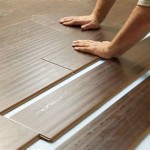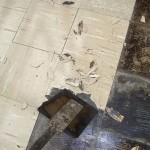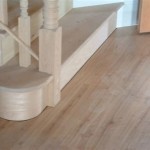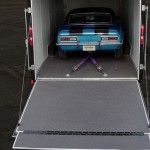Using Vinyl Flooring On Shower Walls: A Comprehensive Guide
The use of vinyl flooring as a wall covering, particularly within shower enclosures, has emerged as a cost-effective and aesthetically versatile alternative to traditional tiling. While primarily designed for horizontal surfaces, the inherent properties of vinyl, such as water resistance and ease of installation, make it a viable option for vertical applications. The decision to use vinyl flooring on shower walls, however, necessitates a thorough understanding of its advantages, disadvantages, installation requirements, and long-term maintenance implications.
This article will explore the various aspects of using vinyl flooring on shower walls, providing a comprehensive overview of the considerations involved. The factors discussed will range from material selection and preparation to installation techniques and potential problems. The goal is to equip readers with the knowledge necessary to make informed decisions regarding the suitability of vinyl flooring as a shower wall covering in their specific circumstances.
Understanding the Benefits of Vinyl Flooring on Shower Walls
One of the primary advantages of using vinyl flooring on shower walls is its inherent water resistance. Vinyl is a non-porous material, meaning it does not readily absorb water. This characteristic is crucial in a shower environment, where constant exposure to moisture is a primary concern. Unlike some natural stone tiles or improperly sealed grout lines, vinyl offers a virtually impenetrable barrier against water penetration, mitigating the risk of mold and mildew growth behind the wall surface. This makes it a potentially more hygienic option than some traditional tiling methods, provided proper sealing and installation are executed.
Another significant benefit is the ease of installation. Compared to installing individual tiles, which requires meticulous placement, grouting, and sealing, vinyl flooring can be installed in larger sheets or planks. This reduces the number of seams and potential points of water entry. The installation process is generally faster and less labor-intensive, potentially leading to cost savings. Many types of vinyl flooring are designed with interlocking systems or adhesive backing, further simplifying the installation procedure. This makes it a viable option for DIY enthusiasts with some experience in home improvement.
Furthermore, vinyl flooring offers a wide range of aesthetic possibilities. It is available in numerous colors, patterns, and textures, including realistic wood grain, stone, and tile effects. This allows homeowners to achieve a desired aesthetic without the expense and complexity of using natural materials. The versatility of vinyl allows for personalized design choices and the creation of visually appealing shower spaces. The availability of large-format sheets also minimizes visual interruptions from seams, creating a more seamless and modern look.
Addressing the Potential Drawbacks of Vinyl Flooring as a Shower Wall Covering
While vinyl flooring offers several benefits as a shower wall covering, it is crucial to acknowledge the potential drawbacks. One primary concern is the vulnerability of seams and edges to water damage if not properly sealed. While the vinyl itself is waterproof, water can still seep behind the material through poorly sealed seams or edges, leading to mold growth and structural damage. Meticulous sealing with a high-quality, waterproof sealant is therefore essential during installation and requires regular inspection and maintenance to ensure its integrity over time.
Another potential issue is the susceptibility of vinyl to damage from sharp objects or abrasive cleaners. While durable, vinyl is not impervious to scratches or tears. Care must be taken to avoid using harsh cleaning products or abrasive scrubbing pads, as these can damage the surface and compromise its waterproof properties. Additionally, heavy impacts or sharp objects can puncture the vinyl, creating entry points for water. Regular inspection for any signs of damage and prompt repair are necessary to maintain the integrity of the shower wall.
Furthermore, the longevity of vinyl flooring on shower walls may be shorter compared to more traditional tiling options like porcelain or ceramic. While high-quality vinyl can last for many years with proper care, it is generally not as durable as ceramic or porcelain tile. Over time, vinyl may fade, warp, or become discolored due to prolonged exposure to moisture and chemicals. The lifespan of vinyl on shower walls is significantly influenced by the quality of the material, the quality of the installation, and the frequency and type of cleaning performed.
Key Considerations for Installation and Maintenance
Successful installation of vinyl flooring on shower walls requires careful preparation and attention to detail. The wall surface must be clean, smooth, and dry before installation can begin. Any existing imperfections, such as cracks or holes, must be repaired and leveled to provide a stable and even substrate for the vinyl. Failure to properly prepare the wall surface can lead to uneven adhesion, bubbling, and ultimately, water damage. A primer designed for vinyl application on walls is often recommended to enhance adhesion and prevent moisture penetration.
The choice of adhesive and sealant is crucial for ensuring a waterproof and long-lasting installation. A high-quality, waterproof adhesive specifically designed for vinyl flooring is essential for bonding the material to the wall surface. The adhesive should be applied evenly and according to the manufacturer's instructions. Similarly, a high-quality, waterproof sealant must be used to seal all seams, edges, and penetrations (such as around showerheads and faucets) to prevent water from seeping behind the vinyl. The sealant should be flexible and resistant to mold and mildew growth.
Proper maintenance is essential for extending the lifespan of vinyl flooring on shower walls and preventing water damage. Regular cleaning with a mild soap and water solution is recommended to remove soap scum, dirt, and other debris. Avoid using abrasive cleaners or scrubbing pads, as these can damage the surface. Regularly inspect the seams and edges for any signs of cracking or peeling sealant and reapply sealant as needed. Address any water leaks or plumbing issues promptly to prevent water from accumulating behind the vinyl. Proper ventilation in the bathroom is also crucial to minimize moisture buildup and prevent mold and mildew growth.
The specific type of vinyl flooring chosen also impacts the overall suitability. Sheet vinyl offers the fewest seams, making it a strong contender for shower walls. Luxury Vinyl Planks (LVP) or Luxury Vinyl Tile (LVT), while aesthetically appealing, create more seams and require meticulous sealing. Thicker vinyl materials generally offer greater durability and water resistance compared to thinner options.
Furthermore, consider the long-term implications. While vinyl may be initially cheaper than tiling, the need for more frequent replacement could negate any initial cost savings. Weighing the initial cost against the potential lifespan and maintenance requirements is crucial for making a fiscally responsible decision. It is prudent to obtain quotes from professional installers and compare them with the cost of the vinyl and other necessary materials if considering a DIY installation.
In conclusion, while utilizing vinyl flooring on shower walls presents a viable alternative to traditional tiling due to its water resistance, aesthetic versatility, and ease of installation, careful consideration must be given to its potential drawbacks like seam vulnerability, susceptibility to damage, and potentially shorter lifespan. Proper preparation, meticulous installation techniques, and consistent maintenance are essential for ensuring a waterproof and long-lasting result. Selecting the appropriate type of vinyl and understanding the long-term implications are crucial components of the decision-making process.

Installing Waterproof Vinyl Flooring On Shower Walls Bathroom Design Inspiration Wall

Can You Use Vinyl Flooring On Bathroom Walls Rustic Remodel Lighting Diy

How To Install Vinyl Plank Flooring On Shower Walls For A Designer Look Kyinbridges Com

Bathroom Shower Vinyl Wall Panel Vs Tiles Which One Should You Choose Step Guard Floors

Vinyl Floor Tiles Above Tub Surround Update

Vinyl Floor On The Wall Turn 90 Degrees Choose Diffe Way Live Life Hanf Flooring Bathroom Tile

Can Vinyl Flooring Be Used On Walls And Shower In Singapore Property

Systems For Installing Lvt In Wet Environments Mapei

Custom Full Bathroom With Porcelain Tile Shower Wall And Quartz Countertops Vinyl Plank Flooring Installing

Can You Use Vinyl Flooring On Bathroom Walls Answered W Tips
Related Posts








